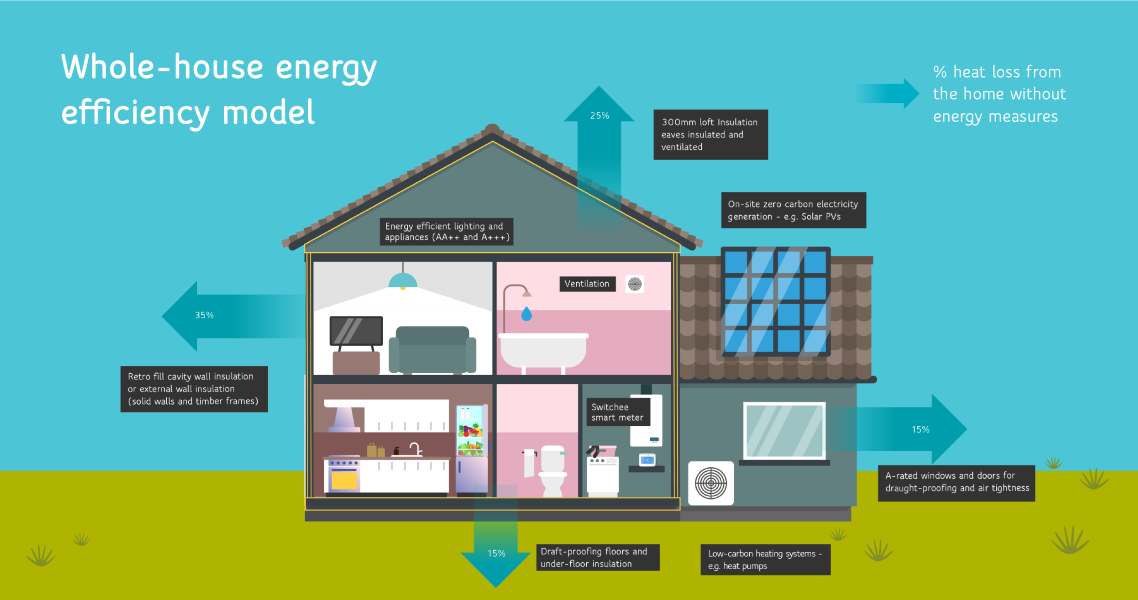Hydra Tech Insights
Stay updated with the latest in technology and gaming.
Energy-Efficient Homes: The Quiet Revolution
Discover the secrets of energy-efficient homes and join the quiet revolution transforming living spaces into sustainable sanctuaries!
Understanding the Benefits of Energy-Efficient Homes
Energy-efficient homes have become increasingly popular due to their numerous benefits that extend beyond just reducing utility bills. One of the primary advantages is the significant decrease in energy consumption, which not only lowers costs but also minimizes the environmental impact. According to recent studies, homes that utilize energy-efficient appliances and lighting can reduce energy usage by up to 30%, allowing homeowners to save a substantial amount on their monthly expenses.
Moreover, energy-efficient homes contribute to enhanced comfort and air quality within the living space. With improved insulation, energy-efficient windows, and advanced heating and cooling systems, these homes maintain consistent temperatures and reduce drafts, leading to a more pleasant indoor environment. Additionally, the use of eco-friendly materials and systems can significantly improve indoor air quality, promoting a healthier lifestyle for residents. Investing in an energy-efficient home not only pays off financially but also enhances overall well-being.

Top 10 Energy-Saving Features to Look for When Buying a Home
When searching for a new home, it's essential to consider energy-saving features that can significantly lower your utility bills and reduce environmental impact. In this guide, we will highlight the top 10 energy-saving features to look for, ensuring that your investment not only supports your lifestyle but also contributes to a sustainable future. Some key features to keep an eye on include energy-efficient windows, which can minimize heat loss during winter and keep your home cool in summer. Additionally, look for homes equipped with LED lighting throughout, as these consume up to 75% less energy compared to traditional bulbs.
Another critical aspect to consider are high-efficiency HVAC systems, which are designed to use significantly less energy while maintaining optimal comfort levels. Homes that feature smart home technology, such as programmable thermostats, can also contribute to energy savings by allowing homeowners to regulate their energy usage more effectively. Furthermore, solar panels are becoming increasingly popular, providing a renewable energy source that can drastically reduce electricity costs. Lastly, insulation quality should not be overlooked, as a well-insulated home maintains temperature control, further enhancing energy efficiency.
How to Retrofit Your Home for Maximum Energy Efficiency
Retrofitting your home for maximum energy efficiency is a smart investment that can significantly reduce your energy bills while contributing to a more sustainable future. Start by conducting an energy audit to identify areas where your home is losing energy. This can include checking for gaps in insulation, drafty windows, and outdated heating and cooling systems. Once you pinpoint the main areas of concern, prioritize retrofitting projects that offer the best return on investment, such as sealing air leaks, adding insulation, and upgrading to energy-efficient appliances.
Another essential step in your retrofitting journey is to incorporate renewable energy sources where possible. Consider installing solar panels on your roof to harness clean energy, or investing in a solar water heater for your hot water needs. You may also want to explore options like energy-efficient lighting and smart home technology that adjusts your energy usage based on your habits. By taking these steps, you can create a more energy-efficient home that not only lowers your utility costs but also enhances your overall comfort and reduces your carbon footprint.